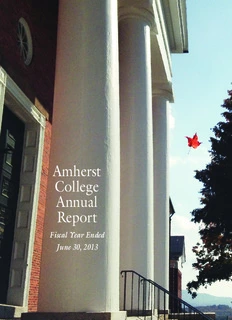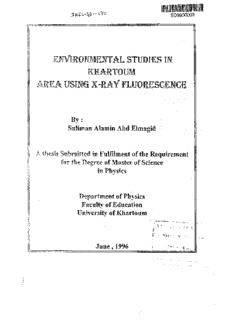
Lord Strathcona: A Biography Of Donald Alexander Smith PDF
Preview Lord Strathcona: A Biography Of Donald Alexander Smith
ILorb ii>tratf)cona A BIOGRAPHY OF DONALD ALEXANDER SMITH DONNA MCDONALD Dundurn Press Toronto • Oxford Copyright © Donna McDonald 1996, 2002 All rights reserved. No part of this publication may be reproduced, stored in a retrieval system, or transmitted in any form or by any means, electronic, mechanical, photocopying, recording, or other- wise (except for brief passages for purposes of review) without the prior permission of Dundum Press. Permission to photocopy should be requested from the Canadian Copyright Licensing Agency. Editor: Rae Fleming Design: Sebastian Vasile Printer: Transcontinental National Library of Canada Cataloguing in Publication Data McDonald, Donna, 1942- Lord Strathcona : a biography of Donald Alexander Smith / Donna McDonald. Includes bibliographical references and index. ISBN 1-55002-266-0 (bound).—ISBN 1-55002-397-7 (pbk.) 1. Strathcona and Mount Royal, Donald Alexander Smith, Baron, 1820-1914. 2. Capitalists and financiers—Canada—Biography. 3. Hudson's Bay Company—Biography. 4. Canadian Pacific Railway Company—Biography. 5. Canada—History—1841-. I. Title. FC506.S9M28 1996 971.05'092 C96-990074-0 F1033.S9M28 1996 Canada THE CANADA COUNCIL LE CONSEIL DES ARTS ONTARIO ARTS COUNCIL FORsIN TCHEE WAR1T.9S87 DDUE CPAUNSAT1D 99A2 CONSEIL DES ARTS DE CONTARIO We acknowledge the support of the Canada Council for the Arts and the Ontario Arts Council for our publishing program. We also acknowledge the financial support of the Government of Canada through the Book Publishing Industry Development Program and The Association for the Export of Canadian Books, and the Government of Ontario through the Ontario Book Publishers Tax Credit program. Care has been taken to trace the ownership of copyright material used in this book. The author and the publisher welcome any information enabling them to rectify any references or credit in subsequent editions. J. Kirk Howard, President Printed and bound in Canada.® Printed on recycled paper. www.dundurn.com Dundurn Press Dundurn Press Dundurn Press 8 Market Street 73 Lime Walk 2250 Military Road Suite 200 Headington, Oxford, Tonawanda NY Toronto, Ontario, Canada England U.S.A. 14150 M5E 1M6 OX3 7AD Horb H>tratf)cona A BIOGRAPHY OF DONALD ALEXANDER SMITH Walter William Ouless, R.A., Sir Donald Smith, 1890 TABLE OF CONTENTS Foreword 7 1. The Early Years 1820-1838 13 2. The Little Emperor and the King's Posts 1838-1847 25 3. Esquimaux Bay 1847-1852 57 4. Chief Trader 1852-1861 83 5. Chief Factor 1862-1869 .. Ill 6. Louis Riel and the Northwest 1869-1870 137 7. A Representative Man 1870-1871 173 8. Chief Commissioner 1871-1873 195 9. The Pacific Scandal 1873 209 10. Land Commissioner 1874-1879 225 11. The Saint Paul, Minneapolis and Manitoba Railway 1870-1880 . . 255 12. The Canadian Pacific Railway 1880-1885 291 13. The Canadian Sub-committee 1880-1889 329 14. A Man of Substance 1886-1896 349 15. The Great Northern 1885-1901 369 16. Parliament and Manitoba Schools 1886-1896 383 17. High Commissioner 1896-1899 403 18. The Boer War 1900 429 19 A Marvel of a Man 1900-1907 445 20. The Grand Old Man 1908-1914 465 21. Postscript 503 Appendix I: Donations and Bequests 507 Appendix II: Shares and Investments 527 Appendix III: Equivalence: The Value of the Pound and the Dollar in the Nineteenth Century 535 Appendix IV: Genealogical Charts 537 Notes 543 Illustration Credits 573 Bibliography 575 Index 585 For my mother and father FORWORD 0 he nineteenth century in Europe and North America saw more changes than any of its predecessors and, it may be argued, more than the twenti- eth century which has been remarkable less for the number of changes than for the speed with which they have happened. Donald Smith was a nineteenth century man and his life mirrors the develop- ments of his era. He saw the change from stage coach to railway transport, from sail driven transatlantic crossings to steam powered liners; horses and shoe leather gave way to the automobile. The typewriter, the telephone and the telegram became important tools for the businessman in his lifetime, bringing with them a commercial etiquette which is only now, a hundred years later, being replaced by a new code of manners dictated by the computer, the answering machine and the fax. But Donald Smith's life does more than reflect his century. It closely mirrors Canada's passage to nationhood. He spent a quarter of a century in the inhos- pitable territory of uninhabited Quebec and Labrador, emerging from this cold cocoon in time for Confederation, and in time to play a significant and sometimes decisive role in the progress from colonial dependency to full nationhood. He was a principal figure in the peaceful resolution of the first Riel uprising, a major player in the handing over of Hudson's Bay territories to the Canadian govern- ment, a powerful force in the creation of the Canadian Pacific Railway and a sem- inal influence in the establishment of both the Royal Canadian Mounted Police and Canada's independent military. He also made a major contribution to the establishment of both medical science and women's education in Canada. On the international scene, he was involved in the first steps towards the creation of the British Commonwealth, in the development of a world wide cable network and in the British navy's transition from steam to the internal combustion engine and the consequent creation of British Petroleum. It could be assumed that a subject with such a pedigree would have fathered numerous biographies. In fact, he has elicited numerous attempts and to my pre- decessors, both successful and otherwise, I owe many thanks. The task, as they all knew, is not an easy one. Beckles Willson published the first study in 1902 with- out the cooperation of Lord Strathcona, his family and friends (though he knew many of them, including "the old Lord") and it is flawed as a result. Indeed, it and the two subsequent biographies are flawed in the way such books usually are when the author knows his subject. W.T.R. Preston had a venomous streak and reserved much of his spite for Lord Strathcona, giving his malice free rein in his 1914 biography which also contains numerous factual errors. Beckles Willson's 7 Foreword two volume account, published in 1915 and sometimes inaccurately described as the authorized version, is a huge improvement on his earlier study but Sir William Van Home and John Sterling, Lord Strathcona's American lawyer, exercised edi- torial control which they doubtless felt entitled to do since they were also provid- ing financial support. Willson did, however, have access to some of the early cor- respondence and he did know the principal players. As a result, his book provides an invaluable reference, even if it is one with which to disagree on the basis of new information or a different perspective. It is doubly important since much of the material which he was able to read has since been destroyed. It has been argued, especially by Lord Strathcona's family (though not by the present generation of descendants) that he did not want a biography. This cannot be true. His granddaughter, Frances Kitson, and her husband helped to remove pile upon pile of correspondence, all neatly tied with blue ribbon, from the attic of Lord Strathcona's last house in London. Not only were there letters, there were Hudson's Bay Company journals, accounts, maps and plans, books and reports. These spanned a lifetime, from his earliest letters to his mother to his last communications with his solicitors. These documents travelled from the King's Posts on the north shore of the St. Lawrence River to Labrador, to Montreal and to London. In both cities they were moved more than once. Following Lord Strathcona's death, papers were shipped from Montreal to London, including copies of all letters written up to 1892, a series of daily jour- nals covering most years from 1869 to 1891 and ten boxes of personal and busi- ness letters and other papers. Donald Smith did not keep what others may regard as ephemera because he wanted to be encumbered by paper. He kept the evi- dence of his activities initially because he hoped to play an important part on the world's stage and latterly because he knew he had done so. In short, he knew his life merited a biography, knew his papers reflected many important aspects of nineteenth century history, and valued them accordingly. Unfortunately, some of his heirs did not do so. The present Lord Strathcona has been exceedingly courteous and cooperative as have been many other members of the family, particularly his sister, Diana Faber, and her husband, and his brother, Barnaby Howard, and to all of them I am very grateful. Others before them, however, have not recognized the value of the documents in their possession and much has been destroyed. The early correspon- dence, which Beckles Willson saw, seems to have been among the material which was burned, together with documents such as bills which would have provided wonderful clues to a personality which was coincidentally both proud and modest. This intentional conflagration and an accidental one at the Board of Trade Building in Montreal in 1901 have done much to impede the biographer and it is hardly surprising that my predecessors have fallen by the wayside. The late W.L. Morton's manuscript and research notes in the Provincial Archives of Manitoba reveal how barren the territory is and how desperately one must grasp for clues. I am grateful to Mrs. Morton for encouraging me to read this material and to pursue my own research. The archives staff in Winnipeg were consistently helpful and friendly. Another major source of information on Lord Strathcona can be found in the dusty trunks of his Scottish solicitors, Skene Edwards and Garson. Not only have they retained the meticulous Scottish solicitors' accounts of most of their dealings 8 Foreword with his lordship, they have also kept many of his other papers, including Hudson's Bay Company documents, papers on his Canadian investments and details of his financial dealings in the latter years of his life. The richness of the information on the Persian Oil Company, however, is matched by the poverty of personal correspondence. I am nonetheless grateful to Messrs Skene Edwards and Garson for permission to consult this material and to the Scottish Record Office for providing it and the facilities in which to read it. The National Archives of Canada has a hodgepodge of material in its Strathcona files but, more importantly, it houses as originals or on microfilm most of the major collections with relevant material. All the Canadian prime ministers from Macdonald to Borden and all the senior politicians from Confederation to the first world war had dealings with Lord Strathcona, whether in his capacity as Government Commissioner, Hudson's Bay Company executive, CPR director, Canadian High Commissioner or patron of the arts and of many Canadian educa- tional and charitable institutions. The National Archives is one of the easiest national depositories in the world in which to work and the unfailing courtesy and helpfulness of the staff, coupled with the understanding that researchers do not live nine to five lives, has made it a pleasure to work there. Both Bruce Wilson and Bill Russell, during their periods on the Archives staff in London, went out of their way to assist me, as did Timothy Dube in Ottawa. The Hudson's Bay Company Archives, of course, provide a wealth of materi- al on Lord Strathcona and microfilm copies have meant that I have been able to fight with Donald Smith's appalling handwriting at the Public Record Office in London as well as at the company's archival headquarters in Winnipeg. To Meryl Foster and the staff at the Public Record Office and to Judith Hudson Beattie and the staff at the HBC Archives, I am especially grateful. Both women have been outstandingly helpful. During my research, the Hudson's Bay Company gave its collection of papers and artifacts to the provincial archives and museum in Manitoba, a gesture which will ensure that a rich source of information about many aspects of Canadian life will be secured for generations to come. Thanks also are due to W. Thomas White, curator at the James J. Hill Library in Saint Paul where Hill's papers have been preserved for the benefit of scholars and historians. I am grateful to Dr. White for his unfailing courtesy and helpful- ness and to the library's grants programme for an award to enable me to tease out the threads of Donald Smith's involvement with the Saint Paul, Minneapolis and Manitoba Railway. Bequests from my aunt, Elizabeth Griffith, and from John and Lotte Hecht have been used to support the research for this book. Though they did not leave money to me for that specific purpose, their unanticipated generosity helped bring this volume closer to completion. The Hardisty family papers which have been given to the Glenbow Museum and Archives in Calgary have helped me to piece together Lady Strathcona's own background and to discover much about her life with Donald Smith in Labrador. Staff at the Glenbow were generous with their time and advice and their kindness is much appreciated. Cleophas Belvin kindly lent me a copy of his thesis on Lord Strathcona's early career and Nora Hague at the McCord Museum went out of her way to be helpful when I was researching photographs for this volume. 9
Description:The list of books you might like

The Strength In Our Scars

Rich Dad Poor Dad

Do Epic Shit

The Mountain Is You

This Man Confessed
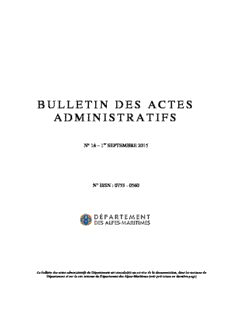
Bulletin des Actes administratifs n°18

Illinois PTAC ... annual report
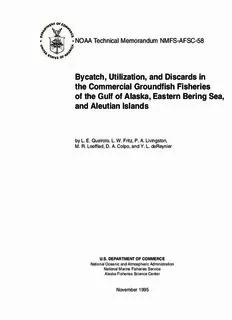
Bycatch, utilization, and discards in the commercial groundfish

The Retirement Years
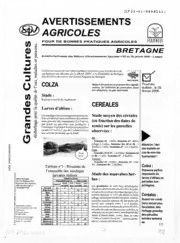
Avertissements Agricoles - Grandes cultures - Bretagne - 2006 - 2
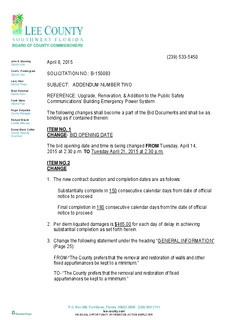
Upgrade, Renovation, & Add
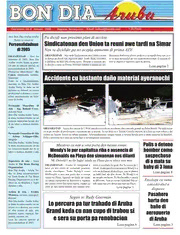
Bon Dia Aruba (4 Januari 2006)
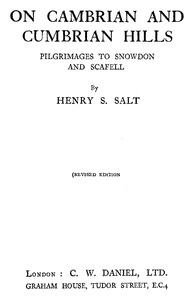
On Cambrian and Cumbrian Hills: Pilgrimages to Snowdon and Scafell by Henry S. Salt

c 2009 by Kyoungsoo Park
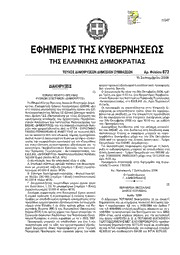
Greek Government Gazette: Part 7, 2006 no. 673

Ojo por ojo
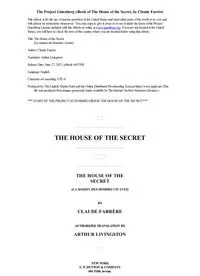
The House of the Secret by Claude Farrre

BarcodeX ActiveX control reference
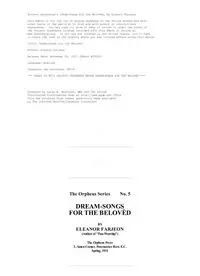
DreamSongs for the Belovd by Eleanor Farjeon

DTIC ADA440836: The Ineffective and Unchanging Drug Strategy

Hacker im Wandel der Zeit: über die differenzierte Verwendung des Hackerbegriffes
